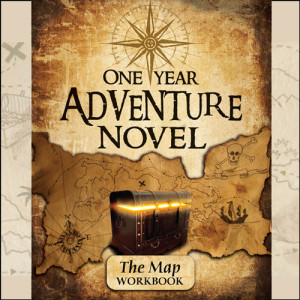Beginning an Adventure – PART 2
Daniel Schwabauer
As a kid, I dreamed of someday being either a writer or a jet fighter pilot. The jet fighter pilot gig didn’t work out, and shortly after graduating from the Creative Writing program at KU, the awful truth hit me: college degrees don’t help you in real life.
I must have suspected my degree wasn’t all that helpful in the real world, because instead of looking for a job after graduating, I went back for a second degree. The theory—which works pretty well for snow cones—was that two Creative Writing degrees are twice as good as one. In this I was correct.
After graduating a second time I started to ask myself questions. What made certain stories work so well? Why did others fail dismally? When I thought I discovered an answer, I rephrased it as a different question and stuffed it into a notebook. Over a period of years the notebook swelled to hundreds of simple, provocative ideas that challenged my imagination. I called the notebook The Write Questions, and I have used it ever since. When I sit down to write a novel, I begin with that notebook, which eventually became part of the OYAN curriculum. Now it’s called The Map.
Shortly after the publication of Runt the Brave, something else happened that would profoundly affect how I write and teach. I was getting invitations to speak at schools and libraries, and on one such occasion I faced the prospect of inspiring a group of talented sixth grade writers to write their own book. This is a daunting task under any circumstances, but I only had 45 minutes.
How do you inspire kids to write a book? I didn’t know. But what if I started with the most fundamental elements of storytelling? What if I began by teaching them what a story is?
That led me to wonder: What is a story anyway, and how do I explain it to a bunch of sixth graders…in 45 minutes?
The answers came—as they often do—while I was walking my dog. I didn’t want to use any of the terms I detested when in school, the terms of analysis so common to textbooks: characterization, setting, plot, style. Such words only stifle my own creativity, and I assumed they would have the same effect on kids. So I threw away those terms and concentrated on the things that make stories meaningful and compelling.
It turns out there are five basic elements common to every story. And as I explained them to the kids at the library, I realized something else. Storytelling is simple. It isn’t magic. It isn’t an inherited trait. It isn’t a special power reserved for the elite.
To understand what makes a story a story, you have to approach writing differently. You can’t start with words, as we did in college. You have to start with ideas. To be creative, you must begin with a telescope, not a microscope.
I suspect other cultures and times have understood What Makes A Story A Story better than we do. We’re surrounded by stories, inundated more than anyone in history. Stories hit us from every possible direction. Radio, Internet, television, magazines, newspapers, books, cell phones, blackberries. Stories adorn the covers of glossy magazines. They fill the airwaves and pour like rain from the Internet, flooding our inboxes and filling our iPhones. Stories are easy and cheap, and because they are easy and cheap they have little value.
But this doesn’t mean stories aren’t powerful. Stories have more raw power to move people unconsciously than perhaps anything else. That power is, in many ways, a great and terrible force.
And it is frequently misused.



